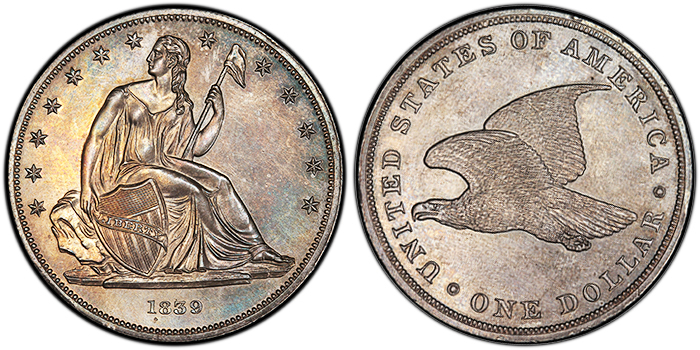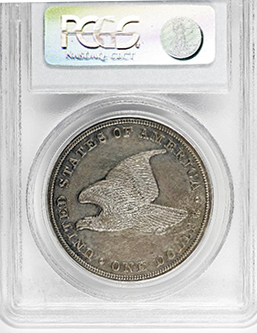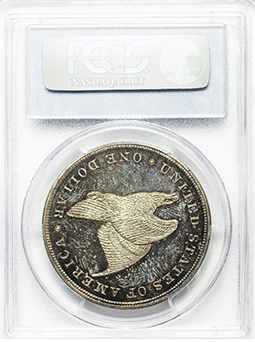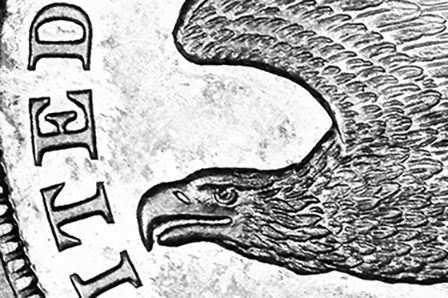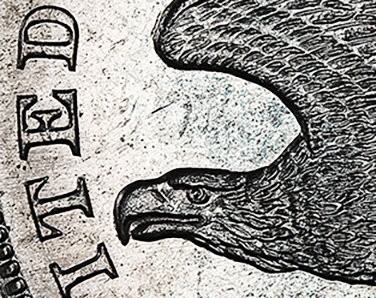Originals - struck last week of DEC 1839 All Originals are in Alignment IV, have weak mirrors, more SPL than fully PL, and typically come with a weakly struck foot. There are about 25 to 30 alignment IV circulated pieces in various grades. While it is impossible to die state coins much below AU, we can state that we have not seen a naturally circulated alignment IV J104 that is a Restrike. We thus presume that all naturally circ coins are Originals. This obviously does not hold for coins that are harshly cleaned or polished. We do not recommend attributing these pieces. There are also several lower grade alignment IV "pocket pieces" and "watch fobs" that are either engraved or holed. If the engraving matches period style or the holed piece has obvious natural wear, we likewise presume these pieces to be Originals.
|
State A - light clashing in crook of elbow at pole and below elbow.
Obverse: Earliest pieces seen to date have scattered light clashing in the obverse fields, most notably on right side in crook of elbow at pole and/or below elbow caused by dies clashing very early during striking or during set-up.
Reverse: Lightly polished reducing lumps at TA and previous (J84) clashing behind wing. Very faintly cracked ITE, MER, and LAR. Elongated lump or wrinkle above SO obscured by polishing. The earliest state coin seen to date has an extremely faint “die line” from second dentil over T to left upper serif of E in UNITED. This line cannot be seen on all State A coins; it becomes stronger, but is still faint, in State B. |
Select |
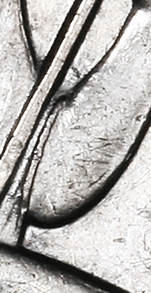 |
| |
State B - polishing eliminates clashing at elbow, faint “die line” from second dentil over T to left upper serif of E in UNITED.
Obverse: Polishing eliminates clashing at elbow, but dies clash again leaving other scattered clashes in obverse fields, between Stars 8 and 10, and lines to right of date.
Reverse: Clashing causes lumps at TA in STATES. Develops a very faint “die line” from second dentil over T to left upper serif of E in UNITED. This “line” is seen on all sharply struck late state J104 Originals, and J84 and J104 restrikes before being polished off for the striking of most of the Starless Reverse mules. However, it is very faintly visible on J63 and J65. It then returns on the very late J104 restrikes, showing that this “die line” is actually a faint crack. |
Select |
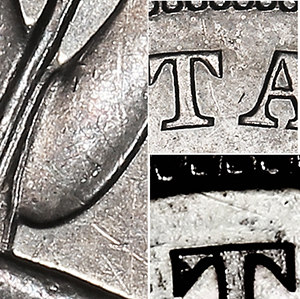 |
| |
Restrikes
Both dies have a strong mirror from polishing. Restrikes are also typically more strongly struck than Originals, generally with a fully struck foot. They are also rather easily distinguished from Originals by the very granularity (rusty) letters and eagle. |
| |
Early State Restrikes. The emission sequence combined with historical auction prices shows that the early J104 restrikes were struck circa 1862 to 1864 by Linderman, et al, who were restriking various pieces for profit. All early state restrikes seen thus far come in alignment III.
Rust in right field at back of hand and down along forearm, eagle and letters granularity from rust, particularly noticeable on the beak, which appears very granularity.
Obverse: Small scattered rust lumps in fields of both dies. Small scattered rust lumps on LIBERTY. Earliest has rust in right field at back of hand and down along forearm. Hand at pole has a "hollowed" appearance from polishing to remove the worst rust.
Reverse: Lumps between TA, elongated lump near dentils above SO. “Die line” (actually a crack) from second dentil over T to left upper serif of E in UNITED, may be weakened by polishing, but visible on sharply struck pieces. Letters granularity from rusting with rust pits on upright and upper curve D United particularly noticeable on sharp strikes. Eagle rusty, particularly noticeable on the beak, which appears very granularity. Slightly later die state than the early J84 restrikes.
|
Select |
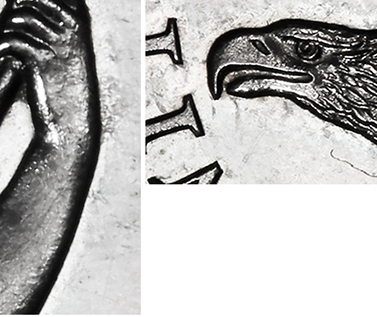 |
| |
Middle State Restrikes. The emission sequence combined with period auction records shows that the mid-state J104 restrikes were struck circa 1863 to 1865 by Linderman, et al. Comes in alignment IV and one unconfirmed coin which may be an alignment III. Seen on defective planchets.
Polishing eliminates most of the rust at hand and forearm, and reduces other defects. Scattered light rust pits still seen on Liberty and fields. Letters and eagle still granularity from rust, especially noticeable on eagle's beak and head.
Obverse: Polishing eliminates most of the rust at hand and forearm, but rust lumps still readily apparent. Scattered light rust pits still seen on Liberty and fields.
Reverse: Heavy polish lines through most letters, especially STATES OF AM, lines fade as striking continues, but can always be seen. Lumps at TA and elongated lump over SO reduced by the polishing. “Die line” (actually a crack) from second dentil over T to left upper serif of E in UNITED, may be weakened by polishing, but visible on sharply struck pieces. Letters granularity from rusting with rust pits on upright and upper curve D United particularly noticeable on sharp strikes. Slightly later die state than the late J84 restrikes.
|
Select |
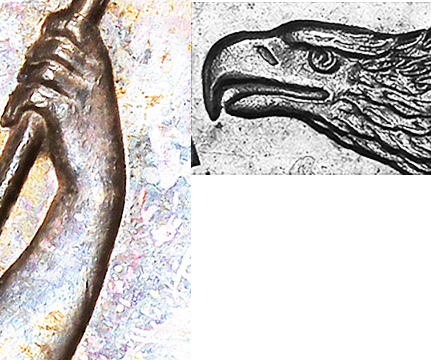 |
| |
Late State Restrikes. The emission sequence combined with auction prices shows that the late state J104 restrikes were struck circa 1873 to 1874 by Linderman, et al, after Linderman returns to the Mint as Superintendent. These are the last Gobrecht dollars struck. Only seen on alignment IV pieces so far. Seen on defective planchets.
Eagle, in particular, has become very rusty resulting in the "frosty" appearance of acid etch. Combined with heavy polishing, this results in the pieces graded Cameo by the grading services. Patch of roughness with polish lines at junction of wing and tail. Often with a heavily polished reverse with letters "dished" by polishing.
Obverse: Highly reflective fields with obvious polish lines. Comes with clash marks in right field.
Reverse: Highly reflective fields with strong polish lines across entire die, particularly strong at letters and around eagle. Small lumps at TA. Elongated lump over SO has been reduced to a series of dots. Patch of roughness with polish lines at junction of wing and tail. Comes with clash lines behind wing. Later polishing causes "dishing" around date and on reverse at UNI ONE DOLLAR.
|
Select |
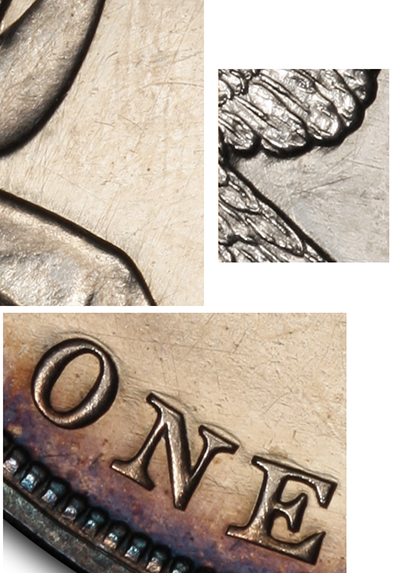 |
